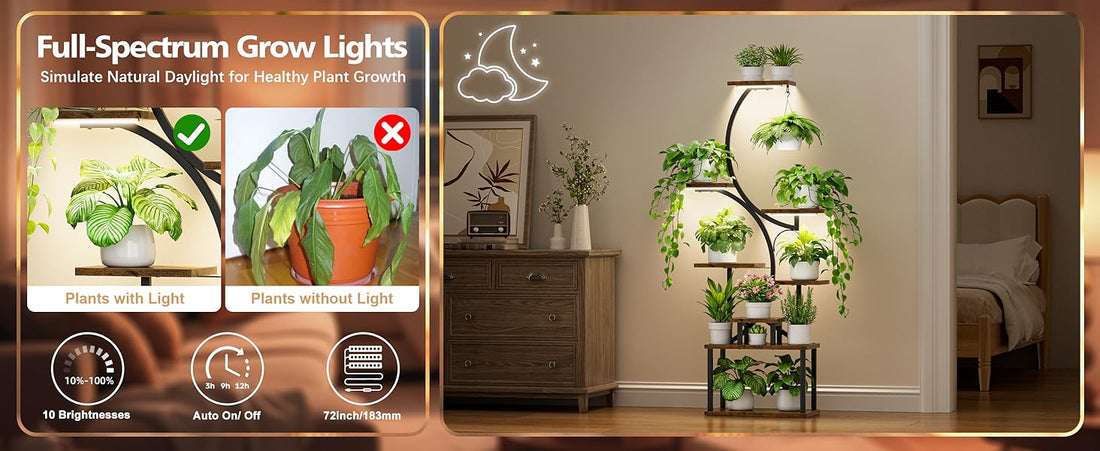
How to Control Humidity for Indoor Plants
Share
Humidity plays a crucial role in keeping indoor plants healthy. While some plants thrive in dry conditions, many tropical varieties need moisture in the air to stay lush and vibrant. If your leaves are turning brown or curling at the edges, humidity may be the missing link.
Here’s how to control indoor humidity—especially when growing on shelves like the amoyls VerdantGlow Plant Shelf.
1. Know Your Plant’s Needs
Some plants love moisture; others prefer it dry. Group accordingly:
🌿 High humidity plants
– Ferns
– Calatheas
– Peace lilies
🌵 Low humidity plants
– Snake plants
– ZZ plants
– Cacti and succulents
🪴 With the VerdantGlow’s 8 tiers, you can group moisture-lovers together on lower shelves and dry-lovers on top for easy care.
2. Use a Humidity Tray
Place a shallow tray with water and pebbles under your plant pots. As the water evaporates, it increases local humidity—without soaking the roots.
💧 Ideal for shelves where you want subtle, space-efficient solutions.
3. Mist Strategically
Use a spray bottle to mist tropical plants 1–2 times a day. Avoid over-misting, especially in low airflow spaces.
🌀 The VerdantGlow’s open-frame design encourages air circulation, helping prevent mold or mildew.
4. Add a Humidifier
For rooms with very dry air—especially in winter—a small humidifier near your plant shelf can make a big difference.
📍 Place it close to mid or lower tiers where humidity tends to drop faster.
5. Monitor the Environment
Use a hygrometer to keep track of humidity levels. Aim for:
- 40–50% for most plants
- 60–70% for tropical species
Balance is Everything
Too much moisture invites mold. Too little leads to crispy leaves. With careful planning and tools like the amoyls VerdantGlow Plant Shelf, maintaining the perfect environment becomes part of your plant care routine—and your home’s design.
👉 Explore the VerdantGlow collection at amoyls.com
